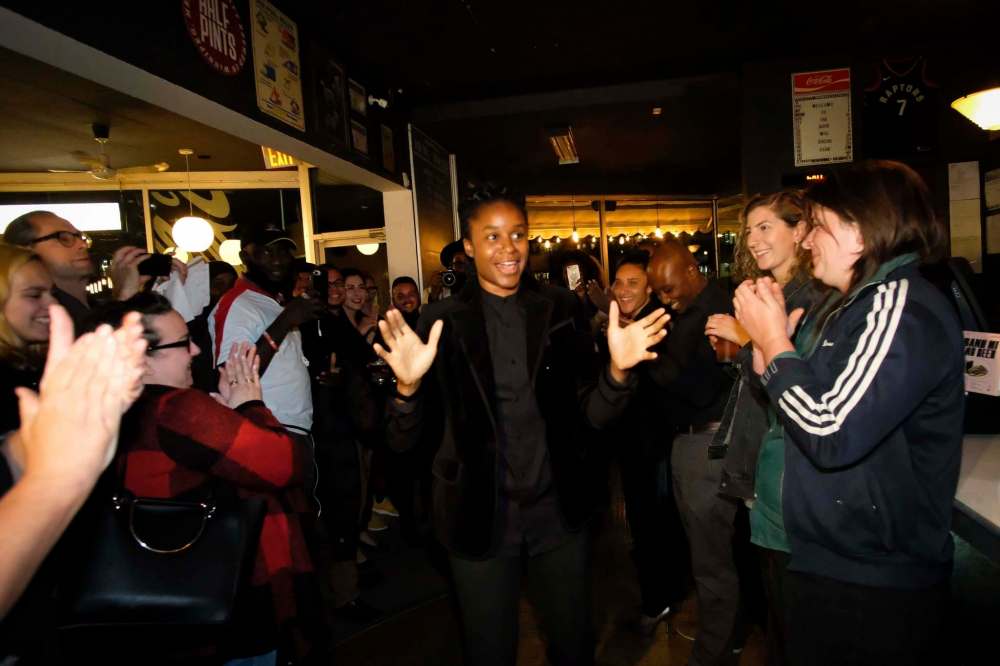NDP makes gains but city still wears PC blue
Advertisement
Read this article for free:
or
Already have an account? Log in here »
To continue reading, please subscribe:
Monthly Digital Subscription
$0 for the first 4 weeks*
- Enjoy unlimited reading on winnipegfreepress.com
- Read the E-Edition, our digital replica newspaper
- Access News Break, our award-winning app
- Play interactive puzzles
*No charge for 4 weeks then price increases to the regular rate of $19.00 plus GST every four weeks. Offer available to new and qualified returning subscribers only. Cancel any time.
Monthly Digital Subscription
$4.75/week*
- Enjoy unlimited reading on winnipegfreepress.com
- Read the E-Edition, our digital replica newspaper
- Access News Break, our award-winning app
- Play interactive puzzles
*Billed as $19 plus GST every four weeks. Cancel any time.
To continue reading, please subscribe:
Add Free Press access to your Brandon Sun subscription for only an additional
$1 for the first 4 weeks*
*Your next subscription payment will increase by $1.00 and you will be charged $16.99 plus GST for four weeks. After four weeks, your payment will increase to $23.99 plus GST every four weeks.
Read unlimited articles for free today:
or
Already have an account? Log in here »
Hey there, time traveller!
This article was published 11/09/2019 (2284 days ago), so information in it may no longer be current.
More than three years later, Winnipeg is still blue — only the hue is a little lighter.
After the Progressive Conservatives stormed Winnipeg to take the Manitoba legislature in 2016 (claiming 17 seats to the NDP’s 12), the capital city’s ridings were once again key Tuesday in the Tories’ retention of power.
Of 32 city-linked ridings in the 2019 provincial election, the PCs captured 15, enough to once again edge out the NDP (14), which, for nearly two decades, had successfully covered Winnipeg with its trademark orange shade.

Though both front-running parties made efforts to exert their influence in rural Manitoba, much of the campaign focus remained fixated on Winnipeg, where the majority of the province’s 57 seats and potential voters reside. In the lead-up to election day, the civic battleground was a dead heat: the PCs led the NDP amongst decided and leaning voters by only a one-point margin, a late-August Probe Research poll showed.
The polls proved prophetic: while the PCs predictably outmatched the NDP in southern ridings, the fight for Winnipeg was as tight as advertised.
NDP Leader Wab Kinew (who won in Fort Rouge) saw his party retake control of a couple of key seats it lost in 2016: in Transcona, Nello Altomare beat out PC incumbent Blair Yakimoski; in St. James, Adrien Sala held off PC challenger Michelle Richard.
The biggest NDP win in the city belonged to Jamie Moses, who beat PC incumbent/Minister of Crown Services Colleen Mayer in St. Vital — a riding Mayer won by a few hundred votes over Moses in 2016.
Mayer’s loss also represents the biggest disappointment in the city for the PCs, as she was the only cabinet minister to miss out on re-election. Other than Mayer, all 13 previously-elected PC candidates who were running as either incumbents or as candidates in newly-created city ridings won.
“I got into this to help make this area better. I love you (my family) so much, and I guess I’ll be grocery shopping on the weekend,” Mayer told the Free Press at her campaign headquarters.
For Tory candidate Audrey Gordon, second time was a charm as she won a tightly contested battle in Southdale, beating out Karen Myshkowsky of the NDP. She unsuccessfully ran against Kinew in 2016.

Elsewhere, the NDP regained control of Burrows with a victory by Diljeet Brar, and party mainstays Nahanni Fontaine (St. Johns), Bernadette Smith (Point Douglas) and Matt Wiebe (Concordia) continued to hold court.
Uzoma Asagwara, a star candidate for the NDP, handily won the newly-created Union Station seat.
Winnipeg was once touted as an NDP fortress: between 1999 and 2011, when the party controlled the legislature, it never held fewer than 67 per cent of the city’s seats. As recently as 2011, 87 per cent of Winnipeg MLAs belonged to the NDP.
Meanwhile, the Liberal party won seats in River Heights and St. Boniface (former and current provincial leaders Jon Gerrard and Dougald Lamont, respectively). Liberal candidate Cindy Lamoureux, the former MLA for Burrows, shifted to a new riding to defeat Tyndall Park NDP incumbent Ted Marcellino.
However, no other Liberal hopefuls — namely Tanjit Nagra in Fort Richmond — gained entry to the legislature, leaving the party with only three seats and without official status.
“One of the challenges of any election is that you have to accept that you can do the best work you’ve ever done in your life, you can work harder than you’ve ever worked in your life and, sometimes, it’s just not good enough,” said Lamont.

The Green party, despite momentum in the Wolseley riding behind candidate David Nickarz, failed to elect its first Manitoba MLA. Nickarz lost to the NDP’s Lisa Naylor by about 700 votes.
Green Leader James Beddome was beat out by Kinew in Fort Rouge.
ben.waldman@freepress.mb.ca

Ben Waldman covers a little bit of everything for the Free Press.
Our newsroom depends on a growing audience of readers to power our journalism. If you are not a paid reader, please consider becoming a subscriber.
Our newsroom depends on its audience of readers to power our journalism. Thank you for your support.

